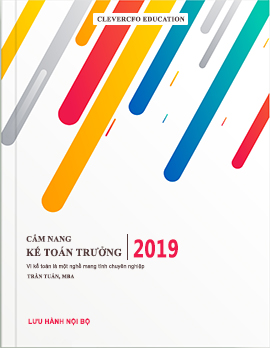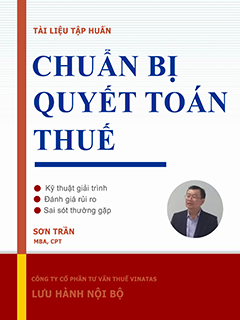Accounting Dictionary – 57 – PEN
PACKING CREDIT is any loan or advance granted or any other credit provided by a bank to an exporter for financing the purchase, processing, manufacturing or packing of goods prior to shipment, on the basis of letter of credit opened in his favor or in favor of some other person, by an overseas buyer or a confirmed and irrevocable order for the export of goods from the producing country or any other evidence of an order for export from that country having been placed on the exporter or some other person, unless lodgment of export orders or letter of credit with the bank has been waived.
PACKING LIST is a statement of the contents of a container, usually put into the container so that the quantity of merchandise may be counted by the person who opens the container. Also known as a packing slip.
PACKING SLIP see PACKING LIST.
PAID-IN-CAPITAL is capital received from investors for stock, equal to capital stock plus paid-in capital, NOT that capital received from earnings or donations. Also called contributed capital.
PAID-UP CAPITAL is the total amount paid by shareholders for their shares of capital stock.
PARENT COMPANY is a company of which others are subsidiaries.
P&L see PROFIT AND LOSS STATEMENT.
PARETO PRINCIPLE/LAW see 80-20 RULE.
PARTNERSHIP is an unincorporated business that has more than one owner. It is different from a sole proprietorship in that a sole proprietorship can have only one owner.
PAR VALUE is a. the maturity value or face value, i.e., the amount that an issuer agrees to pay at the maturity date; b. the official exchange rate between two countries' currencies; or, c. the value of a security that is set by the company issuing it; unrelated to market value.
PAS could mean: Personal Accounting System, Personnel Accounting System, or Personnel Accounting Symbol.
PASSIVE ACTIVITY is defined in the US Tax Code as one or more trades, business or rental activity, that the taxpayer does not materially participate in managing or running. All income and losses from passive activities are grouped together on an income tax return and, generally, loss deductions are limited or suspended until the passive activity that generated them is disposed of in its entirety.
PATENT is a legal form of protection that provides a person or legal entity with exclusive rights to exclude others from making, using, or selling a concept or invention for the duration of the patent. There are three types of patents available: design, plant, and utility.
PAYABLE TO SHAREHOLDERS normally refers to distribution of dividends to shareholders and / or repayment of notes held by shareholders.
PAYBACK PERIOD, in capital budgeting, is the length of time needed to recoup the cost of CAPITAL INVESTMENT. The payback period is the ratio of the initial investment (cash outlay, regardless of the source of the cash) to the annual cash inflows for the recovery period. The major shortcoming for the payback period method is that it does not take into account cash flows after the payback period and is therefore not a measure of the profitability of an investment project. For this reason, analysts generally prefer the DISCOUNTED CASH FLOW methods of capital budgeting; primarily, the INTERNAL RATE OF RETURN and the NET PRESENT VALUE methods.
PAY CYCLE is a set of rules that defines the criteria by which scheduled payments are selected for payment creation, e.g., payroll may be on a weekly, bi-weekly, or monthly pay cycle.
PAYMENT is the satisfaction of a debt or claim; primarily money paid to fulfill an obligation.
PAYMENT ON ACCOUNT see ON ACCOUNT.
PAYOUT RATIO is dividends paid divided by company earnings over some period of time, expressed as a percentage.
PAYROLL BURDEN, in the U.S., includes the cost of your payroll administration, FICA, FUTA, SUTA, workers’ compensation, etc., based on each $100.00 of payroll. For example: $100.00 of payroll earned + 37.56 payroll burden = $137.56 total payroll.
PBC LIST (PROVIDED BY CLIENT LIST) is a request by external auditors of items that will be required from the client by the auditor prior to the commencement of fieldwork. Such PBC lists are preliminary and will likely be expanded once the audit commences.
PC is an acronym for Professional Corporation (business legal entity).
PEGBOARD SYSTEM see ONE-WRITE SYSTEM.
PEG RATIO compares earnings growth and the Price Earnings Ratio. The PEG Ratio (formula) is the current Price Earnings Ratio divided by the expected long-term growth rate (per the earnings per share).
PENDING usually refers to either: 1. Not yet decided; or, 2. Being in continuance.
PENSION MAXIMIZATION is a controversial strategy, often espoused by life insurance agents, of using insurance to augment a company benefit plan. Under this arrangement, a retiree takes pension payments for his or her own life only and buys life insurance to provide for a surviving spouse. Also known as pension max.
PACKING CREDIT is any loan or advance granted or any other credit provided by a bank to an exporter for financing the purchase, processing, manufacturing or packing of goods prior to shipment, on the basis of letter of credit opened in his favor or in favor of some other person, by an overseas buyer or a confirmed and irrevocable order for the export of goods from the producing country or any other evidence of an order for export from that country having been placed on the exporter or some other person, unless lodgment of export orders or letter of credit with the bank has been waived.
PACKING LIST is a statement of the contents of a container, usually put into the container so that the quantity of merchandise may be counted by the person who opens the container. Also known as a packing slip.
PACKING SLIP see PACKING LIST.
PAID-IN-CAPITAL is capital received from investors for stock, equal to capital stock plus paid-in capital, NOT that capital received from earnings or donations. Also called contributed capital.
PAID-UP CAPITAL is the total amount paid by shareholders for their shares of capital stock.
PARENT COMPANY is a company of which others are subsidiaries.
P&L see PROFIT AND LOSS STATEMENT.
PARETO PRINCIPLE/LAW see 80-20 RULE.
PARTNERSHIP is an unincorporated business that has more than one owner. It is different from a sole proprietorship in that a sole proprietorship can have only one owner.
PAR VALUE is a. the maturity value or face value, i.e., the amount that an issuer agrees to pay at the maturity date; b. the official exchange rate between two countries' currencies; or, c. the value of a security that is set by the company issuing it; unrelated to market value.
PAS could mean: Personal Accounting System, Personnel Accounting System, or Personnel Accounting Symbol.
PASSIVE ACTIVITY is defined in the US Tax Code as one or more trades, business or rental activity, that the taxpayer does not materially participate in managing or running. All income and losses from passive activities are grouped together on an income tax return and, generally, loss deductions are limited or suspended until the passive activity that generated them is disposed of in its entirety.
PATENT is a legal form of protection that provides a person or legal entity with exclusive rights to exclude others from making, using, or selling a concept or invention for the duration of the patent. There are three types of patents available: design, plant, and utility.
PAYABLE TO SHAREHOLDERS normally refers to distribution of dividends to shareholders and / or repayment of notes held by shareholders.
PAYBACK PERIOD, in capital budgeting, is the length of time needed to recoup the cost of CAPITAL INVESTMENT. The payback period is the ratio of the initial investment (cash outlay, regardless of the source of the cash) to the annual cash inflows for the recovery period. The major shortcoming for the payback period method is that it does not take into account cash flows after the payback period and is therefore not a measure of the profitability of an investment project. For this reason, analysts generally prefer the DISCOUNTED CASH FLOW methods of capital budgeting; primarily, the INTERNAL RATE OF RETURN and the NET PRESENT VALUE methods.
PAY CYCLE is a set of rules that defines the criteria by which scheduled payments are selected for payment creation, e.g., payroll may be on a weekly, bi-weekly, or monthly pay cycle.
PAYMENT is the satisfaction of a debt or claim; primarily money paid to fulfill an obligation.
PAYMENT ON ACCOUNT see ON ACCOUNT.
PAYOUT RATIO is dividends paid divided by company earnings over some period of time, expressed as a percentage.
PAYROLL BURDEN, in the U.S., includes the cost of your payroll administration, FICA, FUTA, SUTA, workers’ compensation, etc., based on each $100.00 of payroll. For example: $100.00 of payroll earned + 37.56 payroll burden = $137.56 total payroll.
PBC LIST (PROVIDED BY CLIENT LIST) is a request by external auditors of items that will be required from the client by the auditor prior to the commencement of fieldwork. Such PBC lists are preliminary and will likely be expanded once the audit commences.
PC is an acronym for Professional Corporation (business legal entity).
PEGBOARD SYSTEM see ONE-WRITE SYSTEM.
PEG RATIO compares earnings growth and the Price Earnings Ratio. The PEG Ratio (formula) is the current Price Earnings Ratio divided by the expected long-term growth rate (per the earnings per share).
PENDING usually refers to either: 1. Not yet decided; or, 2. Being in continuance.
PENSION MAXIMIZATION is a controversial strategy, often espoused by life insurance agents, of using insurance to augment a company benefit plan. Under this arrangement, a retiree takes pension payments for his or her own life only and buys life insurance to provide for a surviving spouse. Also known as pension max.









